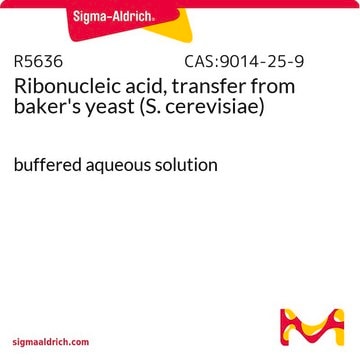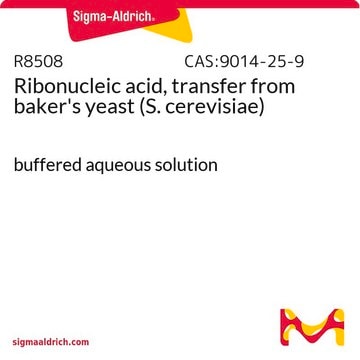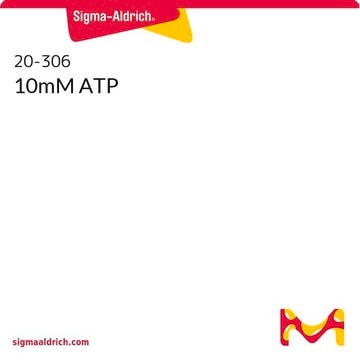R7009
Sty I from Escherichia coli strain carrying pST27
buffered aqueous glycerol solution
Sign Into View Organizational & Contract Pricing
All Photos(1)
About This Item
CAS Number:
MDL number:
UNSPSC Code:
12352204
NACRES:
NA.53
Recommended Products
form
buffered aqueous glycerol solution
concentration
10,000 units/mL
shipped in
wet ice
storage temp.
−20°C
Specificity
Recognition sequence: 5′-C/C(A,T)(T,A)GG-3′
Ligation and recutting results: After 2-10-fold Sty I overdigestion of 1 μg λ DNA substrate, results in 100% cutting, >95% of fragments can be ligated, and >95% recut.
Heat inactivation: Inactivated at 65 °C for 15 minutes.
Ligation and recutting results: After 2-10-fold Sty I overdigestion of 1 μg λ DNA substrate, results in 100% cutting, >95% of fragments can be ligated, and >95% recut.
Heat inactivation: Inactivated at 65 °C for 15 minutes.
Other Notes
Supplied with 10x Restriction Endonuclease Buffer SH (B3657).
Physical form
Solution in 20 mM Tris-HCl, pH 7.5, 0.1 mM EDTA, 50 mM KCl, 10 mM 2-mercaptoethanol, 0.1% gelatine (v/v), 0.01% polydocanol (v/v), 50% glycerol (v/v) at 4 °C
related product
Choose from one of the most recent versions:
Already Own This Product?
Find documentation for the products that you have recently purchased in the Document Library.
K Mise et al.
Gene, 33(3), 357-361 (1985-01-01)
A new restriction endonuclease, StyI, free of contaminating nuclease activities, has been isolated from Escherichia coli carrying the hsd+ miniplasmid of Salmonella typhi origin. In the presence of 10 mM Mg2+, it recognizes and cleaves a hexanucleotide sequence of 5'-C
C Kessler et al.
Gene, 47(1), 1-153 (1986-01-01)
The properties and sources of all known restriction endonucleases and methylases are listed. The enzymes are cross-indexed (Table I), classified according to their recognition sequence homologies (Table II), and characterized within Table II by the cleavage and methylation positions, the
Gajendradhar R Dwivedi et al.
Nucleic acids research, 41(5), 3274-3288 (2013-01-29)
Helicobacter pylori is a Gram-negative bacterium that colonizes human stomach and causes gastric inflammation. The species is naturally competent and displays remarkable diversity. The presence of a large number of restriction-modification (R-M) systems in this bacterium creates a barrier against
Rachel M Smith et al.
Nucleic acids research, 41(1), 391-404 (2012-11-14)
Type IIB restriction-modification systems, such as BcgI, feature a single protein with both endonuclease and methyltransferase activities. Type IIB nucleases require two recognition sites and cut both strands on both sides of their unmodified sites. BcgI cuts all eight target
Yu-Feng Huang et al.
BMC systems biology, 6 Suppl 2, S10-S10 (2013-01-11)
Current next-generation sequencing (NGS) platforms adopt two types of sequencing mechanisms: by synthesis or by ligation. The former is employed by 454 and Solexa systems, while the latter by SOLiD system. Although the pros and cons for each sequencing mechanism
Our team of scientists has experience in all areas of research including Life Science, Material Science, Chemical Synthesis, Chromatography, Analytical and many others.
Contact Technical Service







